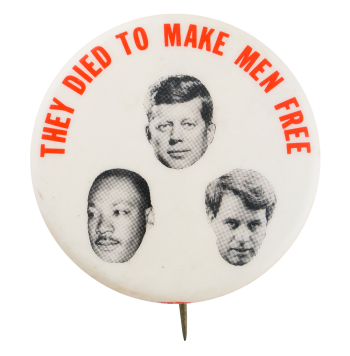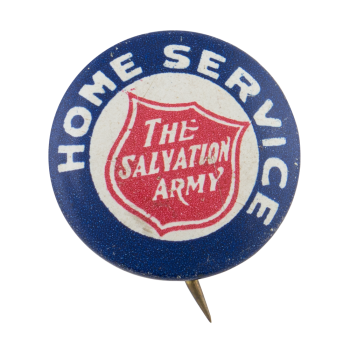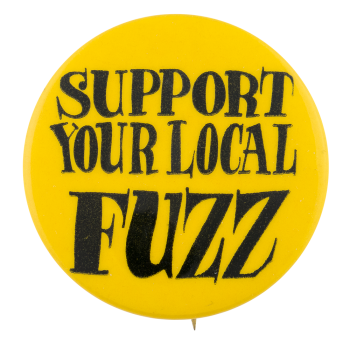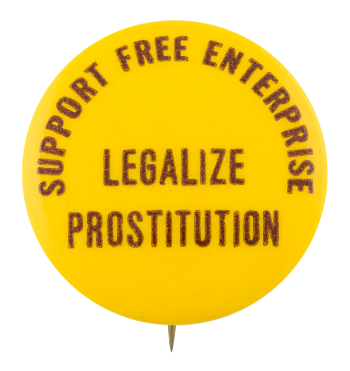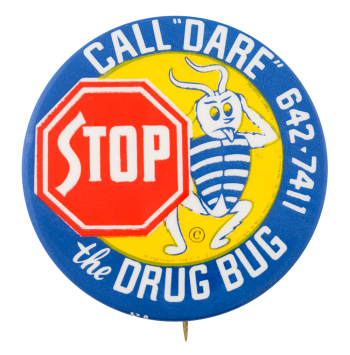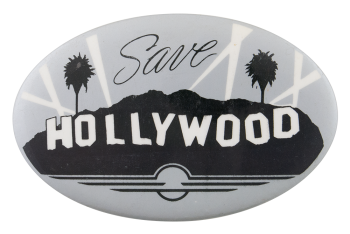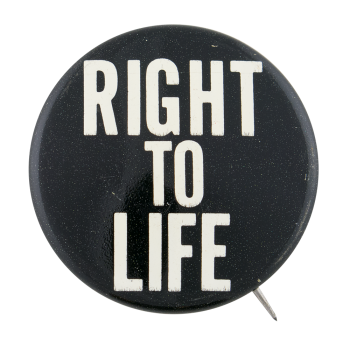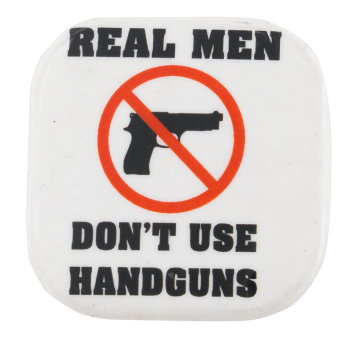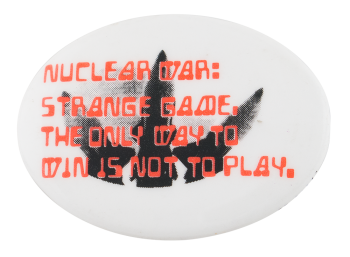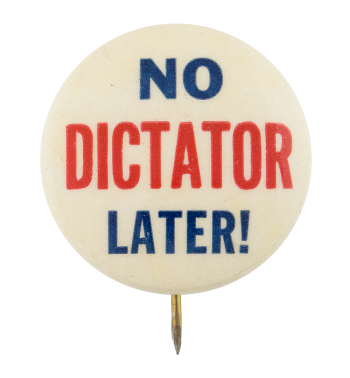They Died to Make Men Free
| Category | |
|---|---|
| Additional Images | |
| Sub Categories | |
| Text on Button | THEY DIED TO MAKE MEN FREE |
| Image Description | Red text along the top edge wtih three photographs of men's heads on a white background |
| Curl Text | union bug |
| Back Style | |
| The Shape | |
| The Size | |
| Additional Information | Seen on the button are John F. Kennedy, Martin Luther King, Jr., and Robert F. Kennedy, all of whom were civil rights activists and were assassinated. Robert F. Kennedy worked for civil rights for African Americans. John F. Kennedy delivered his Civil Rights Address on June 11, 1963 in which he proposed the Civil Rights Act of 1964. It was also in 1963 that Martin Luther King, Jr. launched a campaign of mass protests in Birmingham, Alabama, and would later delivered his "I Have a Dream" speech from the steps of the Lincoln Memorial. Both John F. Kennedy and Robert F. Kennedy worked together to pass the Civil Rights Act. These three men fought, campaigned, and died for the civil rights of Americans. |
| Catalog ID | CA0376 |

